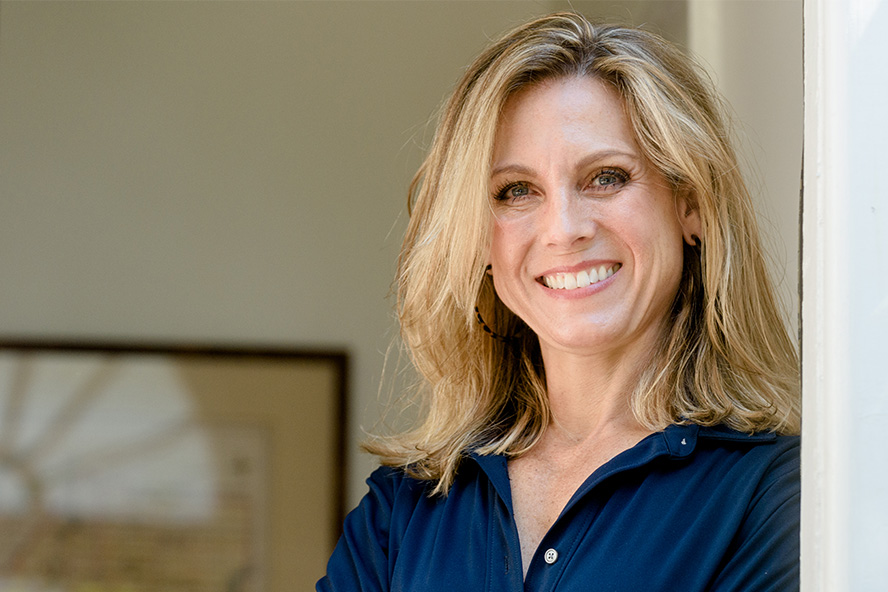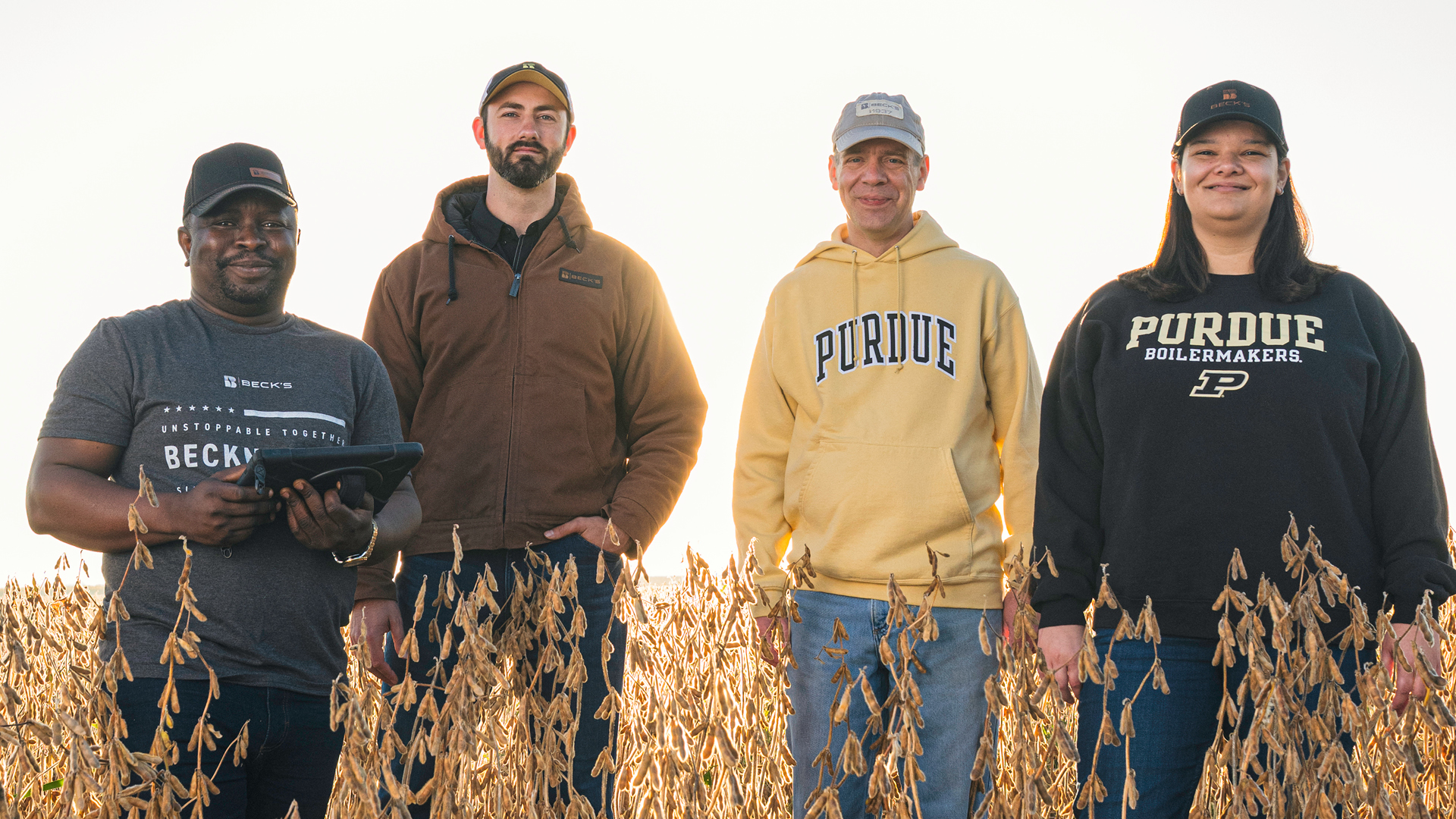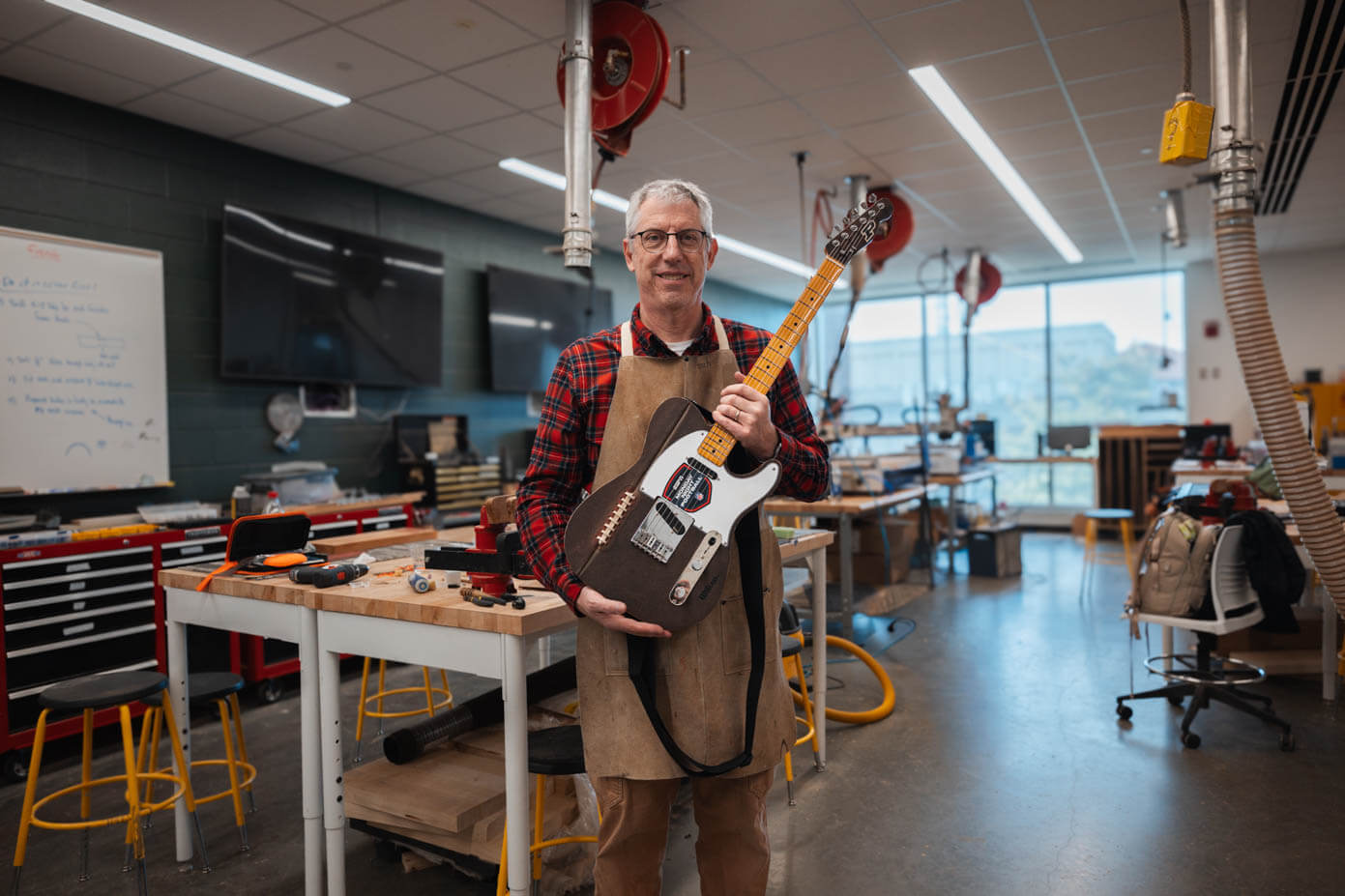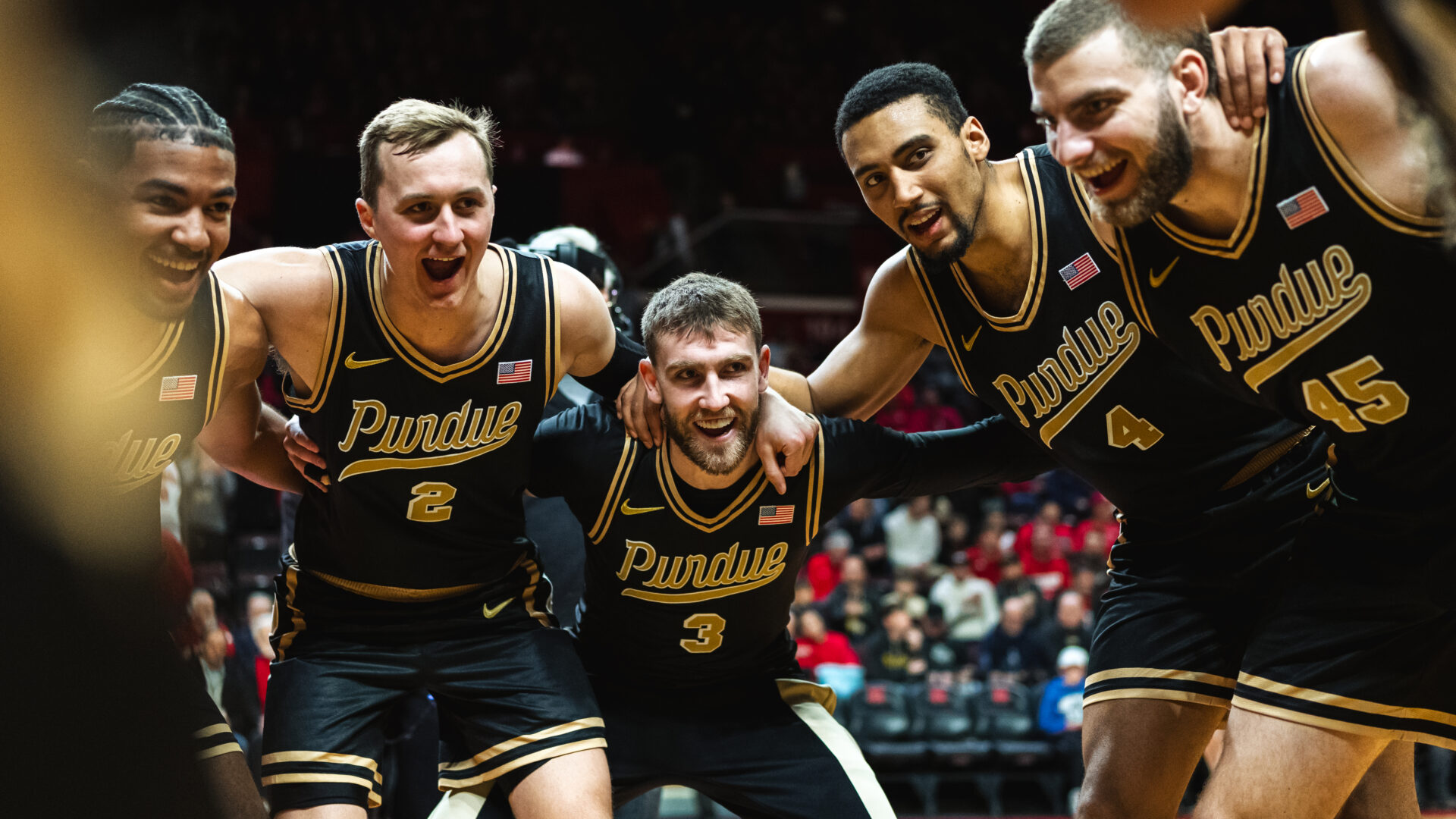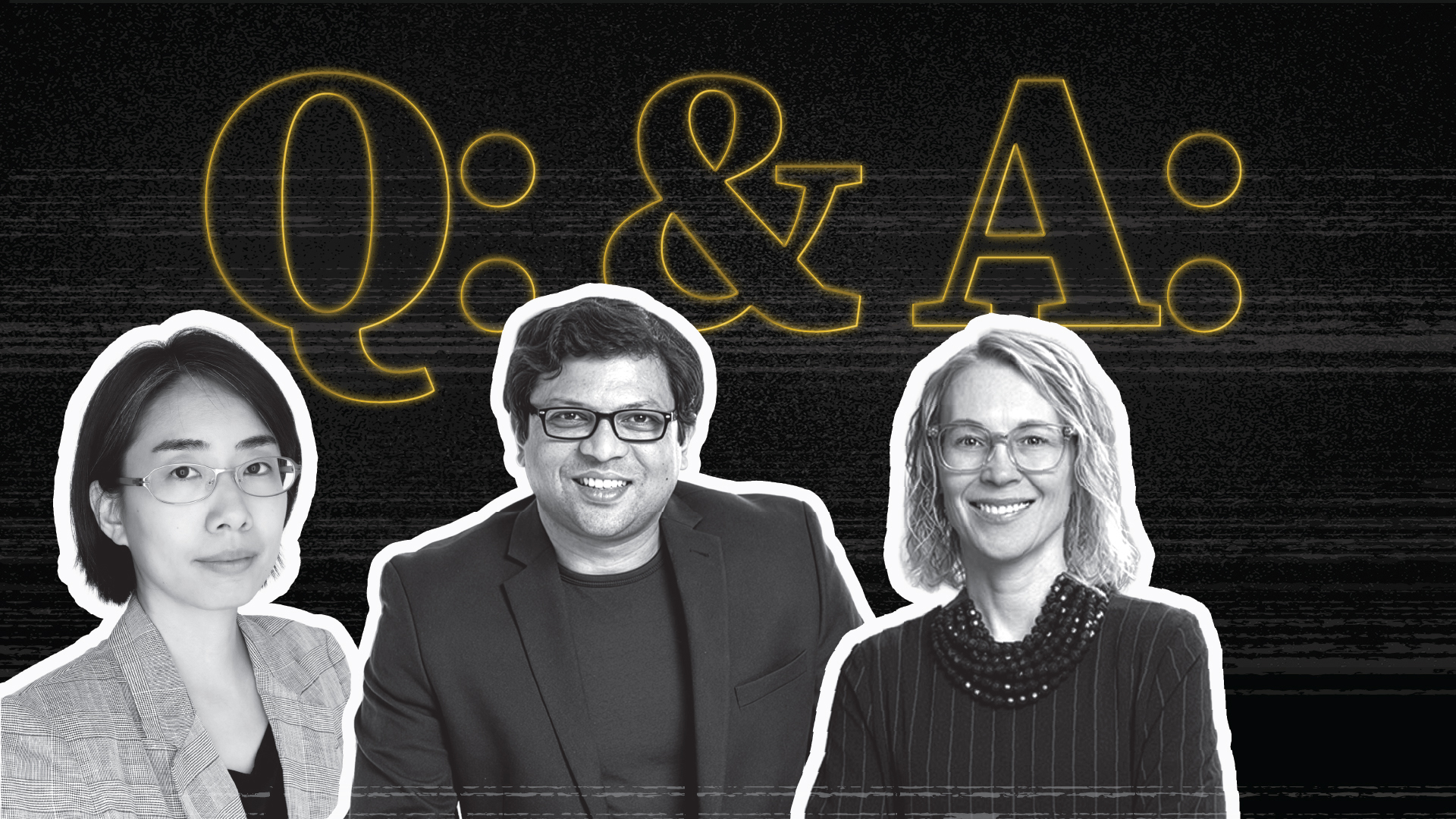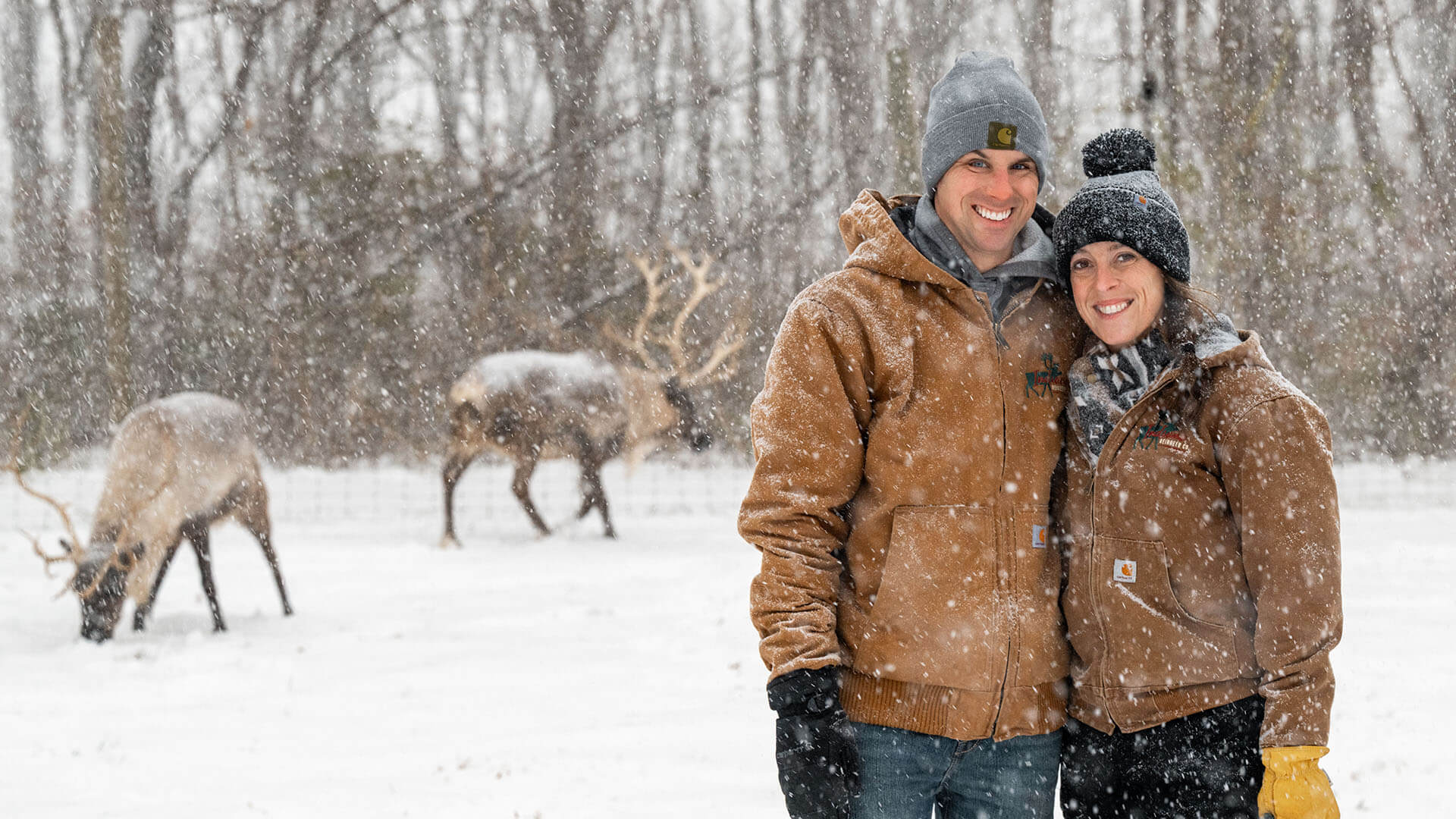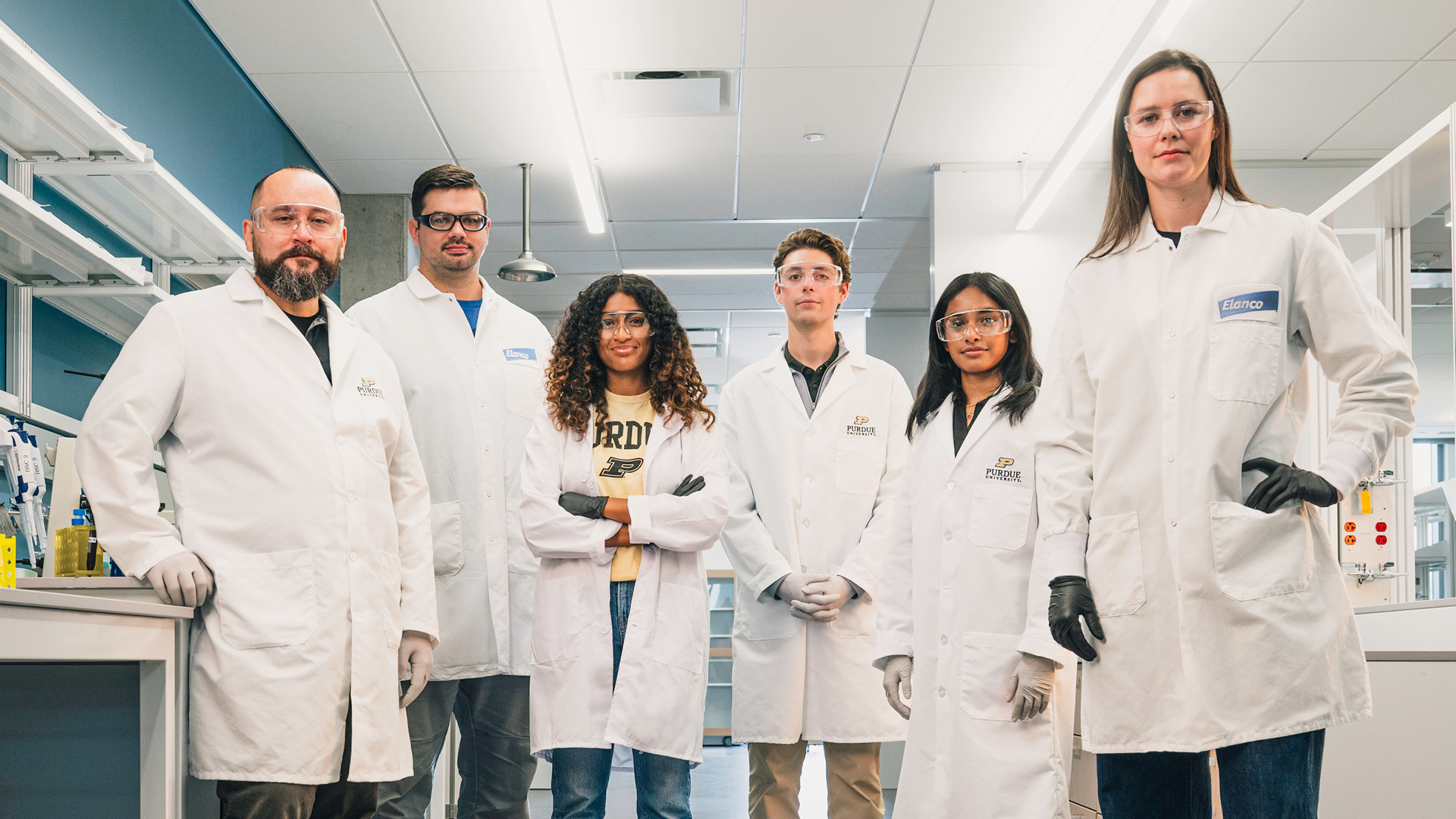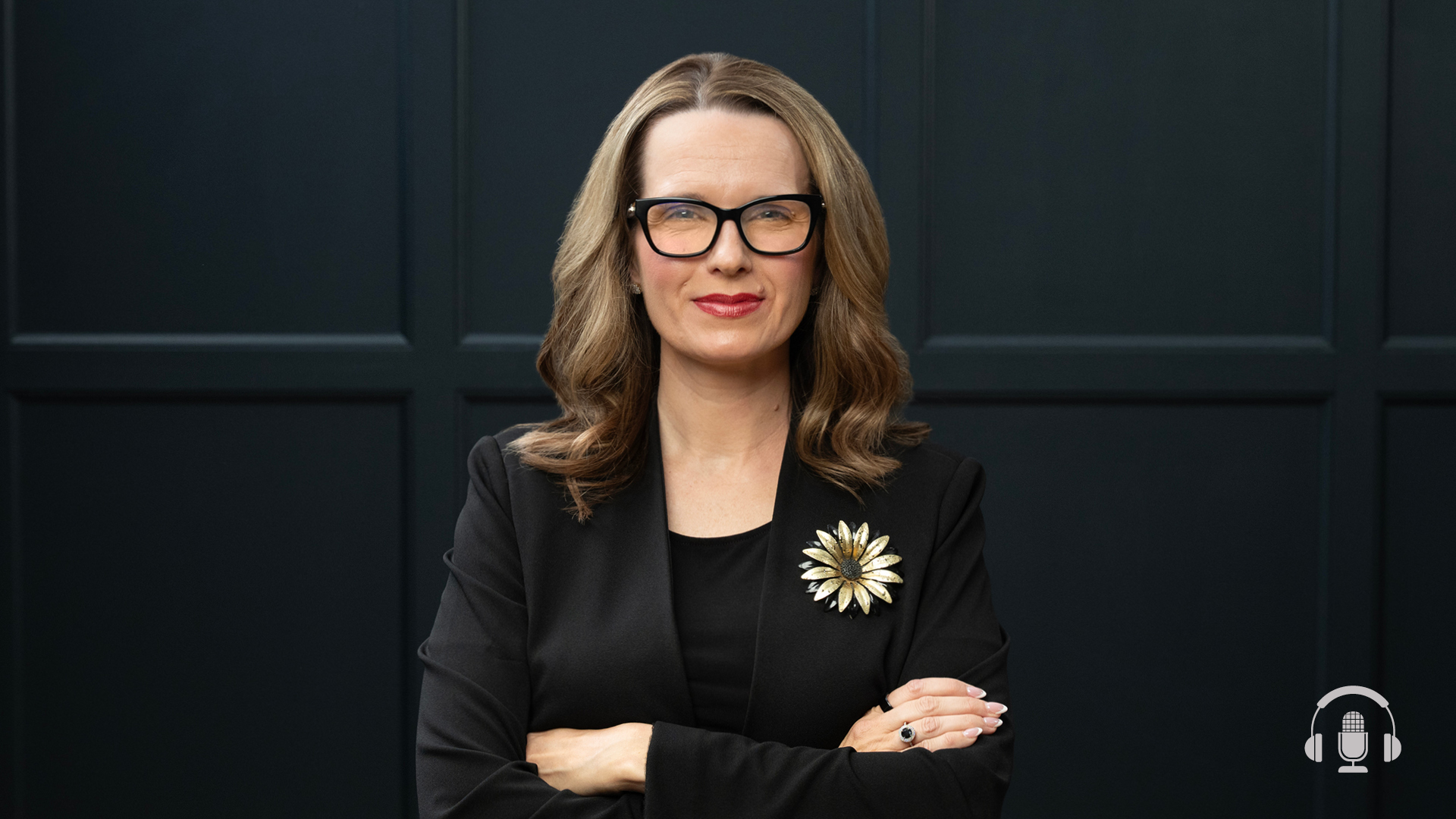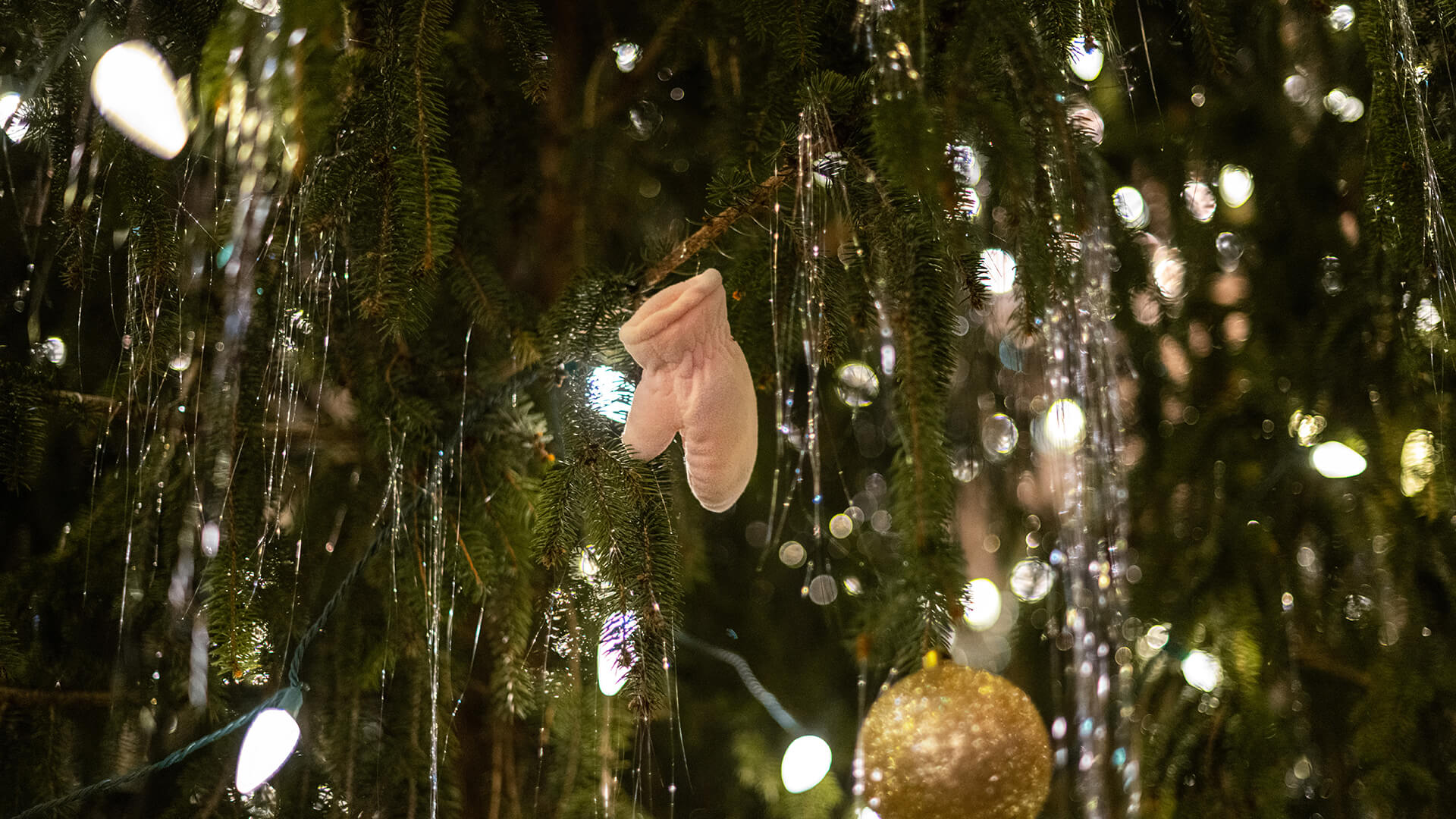Fighter pilot, a Purdue alumna, was prepared to sacrifice her life on 9/11
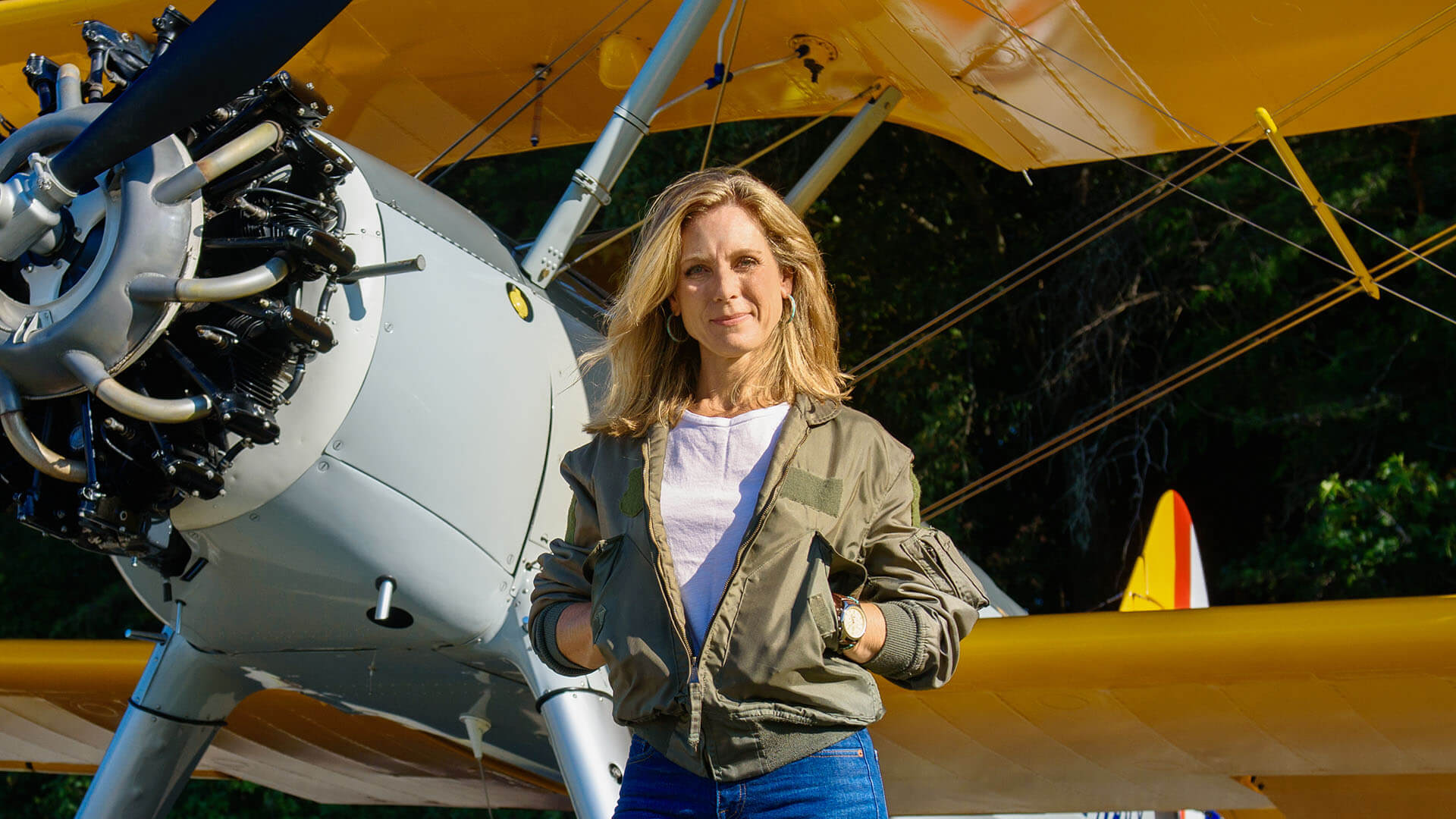
Purdue alumna Heather Penney was an F-16 pilot with the 121st Fighter Squadron stationed at Andrews Air Force Base on Sept. 11, 2001, when terrorists hijacked United Airlines Flight 93. (Photo by Daniel McGarrity for Purdue University)
Alumna Heather Penney planned to crash F-16 into hijacked United Flight 93
For years after the terrorist attacks of Sept. 11, 2001, only a few people outside of Heather Penney’s immediate family were aware of the sacrifice the fighter pilot intended to make that morning to prevent any additional tragedy.
“No one really asked, probably because no one really knew,” says Penney, who graduated from Purdue in 1995 with a bachelor’s degree in English and in 1997 with a master’s in American studies.
It wasn’t until 2011, when her flight lead, Marc Sasseville, asked Penney to participate in an event acknowledging the 10-year anniversary of the attacks, that they publicly shared their remarkable story.
With no time available to arm their F-16s after learning the nation was under attack, the pilots took off from Andrews Air Force Base, fully expecting not to return. If they successfully located the hijacked United Airlines Flight 93 — a flight from Newark to San Francisco that had veered back toward Washington, D.C. — they would crash their fighter jets into the rogue Boeing 757-222.
Sasseville would ram the cockpit and Penney the tail, preventing the plane from reaching its intended target, reportedly either the White House or U.S. Capitol.
“When Sass and I took off, we believed that if we were successful that this was a one-way mission, that this was a suicide mission,” Penney says.
Podcast Ep. 77: Fighter Pilot Heather Penney Reflects on Purdue Journey and 9/11 Mission
Sasseville and Penney, however, never located the airliner. In fact, they later learned that their frustrating wait to be authorized for takeoff had taken too long. If not for the heroic actions of the passengers and crew who resisted the four hijackers and forced the plane to crash into the Pennsylvania countryside, United 93 likely would have become the fourth hijacked plane that morning to obliterate a national landmark.
“Much later during the postmortem, I realized we took off half an hour after the passengers crashed Flight 93,” Penney says. “They would have reached D.C. before we ever took off.”
When she relays the story today, she refers to their mission as a failure in large part because of the organizational shortcomings that prevented Penney and Sasseville from arriving in time to sacrifice their own lives.
There is nothing cathartic about continually reliving the day’s tragic events. She actually finds it more difficult to rehash the story than it was to board an F-16 intending to fulfill her sworn duty to sacrifice her life in defense of her country.
“People always ask, ‘So were you traumatized from the day?’” Penney says. “And I’m like, ‘No, I’m not traumatized from the day, but I pretty much am traumatized after every speech.’”
And yet she persists in retelling the story in media interviews, public speaking engagements and even a TED Talk to honor those whom she views as the real heroes of Sept. 11: the everyday Americans who snapped into action when they were needed most, whether as first responders in New York City or passengers on a cross-country flight who prevented terrorists from further devastating a shocked nation.
Certainly, Sass and I were willing to give our lives. Anybody would have been willing to do the same, and I can say that with certainty because the passengers on Flight 93 did.
Heather Penney
“They were just ordinary Americans doing the ordinary business of their lives. And yet they had to make a choice that they never should have had to make. And that truly is where I feel the failure the most,” Penney says. “In telling the story, I felt very conflicted about it because we were a ‘failure,’ and also I did not want it to be voyeuristic.
“And so, as I began to tell the story, it became very important to me to move to a meaning that was greater than just what happened and to help people realize the story’s not about me. I’m simply a witness,” she continues. “Certainly, Sass and I were willing to give our lives. Anybody would have been willing to do the same, and I can say that with certainty because the passengers on Flight 93 did.”
Purdue days
Penney enrolled at Purdue in 1992 planning to major in aeronautical engineering and join the Air Force ROTC, all in an effort to become a fighter pilot like her father, John, who flew in the Vietnam War.
There was only one problem: The Air Force had not yet permitted women to fly combat aircraft. ROTC was out.
Actually, there were two problems.
“I discovered that I was just not in love with the computer programming and the engineering piece, so I did not follow the engineering track,” she recalls. “It just wasn’t quite the right fit for me.”
After one semester at Purdue, with her original plan already foiled, Penney changed her major to English, a subject in which she thrived back in high school in Colorado. She admits now that she did not have a career plan at that point. Perhaps she would have become a teacher, but “that wasn’t really what I was on fire to do.”
In the meantime, she overloaded on coursework, frequently taking 21 to 24 credit hours per semester in an effort to graduate in three years and ease the financial burden on her parents who were putting twin daughters through college at the same time. Penney also did her part to pay the bills, washing dishes in the Earhart Hall cafeteria as a freshman and waitressing late into the night at the now-defunct Utopia Diner in Chauncey Hill Mall.
Although she no longer expected to fly fighter planes, Penney was still drawn to aviation. She earned a pilot’s license after her freshman year and enjoyed flying at the Purdue University Airport when she could scrape together the cash to put in the occasional hour of flight time.
She also partnered with fellow Boilermaker Krystal Lewis — who went on to become a pilot with United — to form the first collegiate team to compete in the Air Race Classic, where teams of women pilots flew a designated 2,427-mile route in the span of four days. Among the historic event’s alumni is another notable Boilermaker, Amelia Earhart.
Flying a 1983 Piper Warrior II they rented from the University, Penney and Lewis placed ninth out of the 42 teams that entered the 1994 race.
“There are all these decision and judgment elements that go into a pilot’s airmanship, so it’s all about the brain and how you’re making these assessments and doing that kind of analysis,” Penney says. “And so it’s a really fun race because you’re racing against other women in their aircraft and all the airplanes are different.”
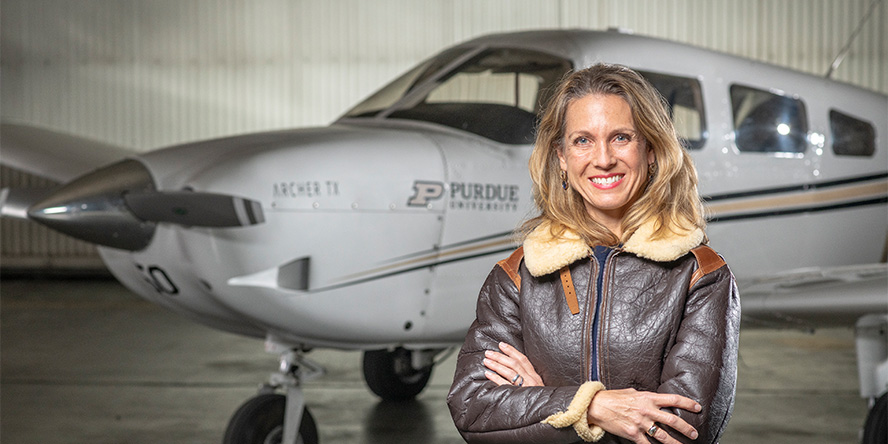

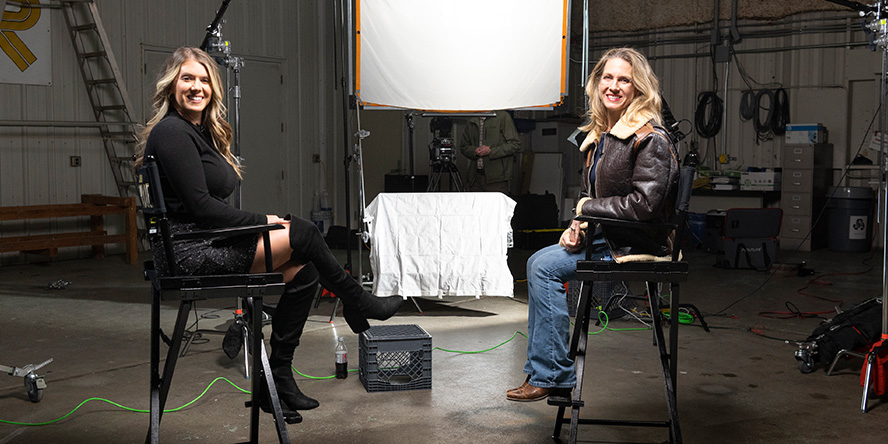
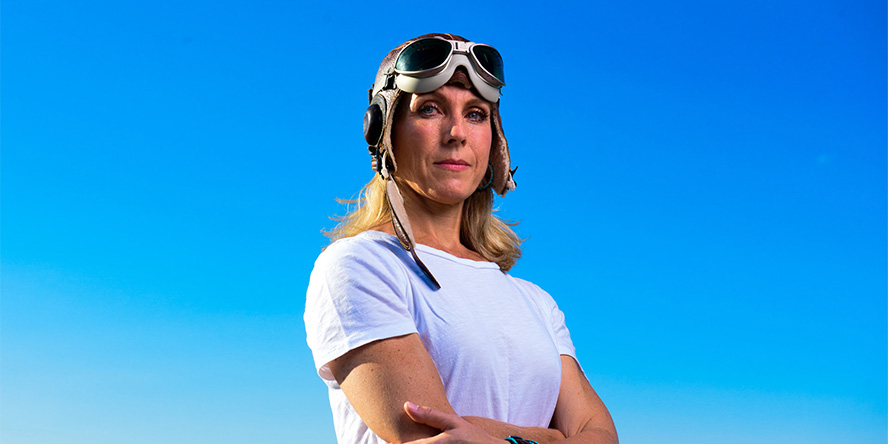
Plan A reappears
Penney was a graduate student in Purdue’s American studies program when she learned that Congress and the Department of Defense had eliminated rules barring women from flying combat aircraft.
She immediately began compiling the materials necessary to apply to the Air National Guard, which provided a more promising opportunity to land in a fighter cockpit than the ultra-competitive and under-resourced Air Force. And even then, the competition was extreme.
The D.C. Air National Guard invited Penney and nine other pilots to interview out of a field of more than 300 applicants, then selected just two: Penney and Eric Haagenson, who now serves as chief of the Air National Guard’s Combat Air Forces Division.
Penney would train to become one of the first American women to fly the F-16, which was both a tremendous honor and a status that made her self-conscious. As someone who lacked substantial flight experience or the STEM training that many pilots possess, Penney believes her gender was a point in her favor during the selection process. Becoming an expert fighter pilot would be difficult enough without the added internal pressure, as the training class’ only woman, to prove that she belonged.
“I wanted to perform just because I wanted to be the best. I wanted to perform because why wouldn’t you want to go kick ass?” she says. “It never bothered me that I had to be 120% better than the dudes because I wanted to be 120% better than anybody. Just because that was my objective, that’s my goal, that’s how I’m made up.
“The unfortunate thing was the awareness of being a woman and being aware of that spotlight made me self-conscious and, therefore, induced a certain amount of self-doubt and insecurity. Was I going to be good enough?”
It never bothered me that I had to be 120% better than the dudes because I wanted to be 120% better than anybody.
Heather Penney
Although there was certainly competition to rank at the top of the class, Penney was encouraged and somewhat surprised by her male colleagues’ supportiveness during pilot training. When she struggled to master an especially tricky skill, classmates helped guide her through flight simulation until, through sheer repetition, she was finally able to get it down.
“There were definitely growing pains, but the guys were great,” Penney says. “They were fantastic and ultimately we all shared the same goal of earning our wings, getting through whatever fighter school it was, whether it was F-15s or F-16s or A-10s or whatever, and becoming combat fighter pilots.”
Even after completing training and joining the 121st Fighter Squadron, Penney still faced skepticism as the lone woman entering a space that had previously been occupied only by hyper-masculine men. She eventually won over the holdouts, however, through mastery of the F-16, which she views as her proudest accomplishment as a pilot.
“It really is the pinnacle of aviation skill,” says Penney, whose colleagues gave her the call sign “Lucky.”
The 26-year-old lieutenant was only a few months into her tenure with the squadron on the morning of 9/11 when she took off on the flight that would change her life.
She certainly didn’t arrive at Andrews expecting to embark on what might become a suicide mission. Even after the first plane hit the World Trade Center’s North Tower, she and a group of fellow pilots carried on with a scheduling meeting, believing that the crash had been accidental. They quickly became aware that it was no mistake when a second plane crashed into the WTC South Tower 17 minutes later.
On the morning of Sept. 11, only five fighter units across the U.S. sat alert, armed with live weapons and ready to take off and defend the nation at a moment’s notice. The D.C. National Guard was not among them.
In fact, without a governor to call the squadron into action, the fighter group’s leaders were forced to scramble to find someone within the federal government to authorize their pilots to take off from Andrews, located in Prince George’s County, Maryland. Vice President Dick Cheney eventually authorized U.S. fighters to shoot down Flight 93, but Penney and Sasseville still didn’t have enough time to arm their planes with live missiles that could take down an airliner.
Their only viable option was to crash into Flight 93.
But they were unable to arrive in time.
Shared humanity
Penney went on to participate in Operation Noble Eagle, a homeland security effort in the immediate aftermath of Sept. 11, and later served two combat tours in the Middle East. She flew more than a dozen missions in the opening hostilities of Operation Iraqi Freedom, operating as a “scud hunter” and offering close air support to special operations forces.
Her job descriptions have changed since then, but combat aviation still plays a central role in Penney’s career. Penney flew the F-16 until 2009, when the single mom left the military to care for her two young girls. She went on to work in the defense industry, serving as a liaison between Lockheed Martin and the Air Force, Air National Guard and Congress. Today she is a defense policy expert with the Mitchell Institute for Aerospace Studies, a think tank that allows her to employ her Purdue liberal arts training while placing national security issues in the proper context.
“What’s different about the liberal arts is you’re training the brain to think,” Penney says. “It’s all of those critical-thinking skills, it’s the writing skills, it’s the communication skills, it’s the ability to have a broader understanding of context. That’s where the history piece comes in, the political science piece comes in. It’s an understanding of our world in a much deeper and richer way than we typically approach the world that helps us have an understanding of the trajectory, how we got here, where we might be going.”
How can we honor their legacy? By being our better selves.
Heather penney
Even if she no longer occupies a fighter cockpit, Penney still loves to fly, whether piloting her own small planes or serving as a flight instructor. And she continues to speak publicly about her experiences on Sept. 11 despite the frustration that those talks inevitably dredge up from her memory.
Penney observes the partisan bickering that sidetracks the United States while threats grow more complex every day, and she wants the nation to be better. By discussing the heroism displayed by average citizens who brought down Flight 93, saving countless lives in the process, Penney encourages audiences to find ways they also can work together for the common good.
“It never gets easier. The only reason why I continue to do it is because of how I see it impacting the people who hear the story,” Penney says. “It’s important to me when I tell the story that it’s not just traumatic, sensationalist voyeurism, but that it helps us connect to a greater meaning — the meaning of what it means to be an American, of honoring the heroes of that day, the first responders. And how can we honor their legacy? By being our better selves.”
